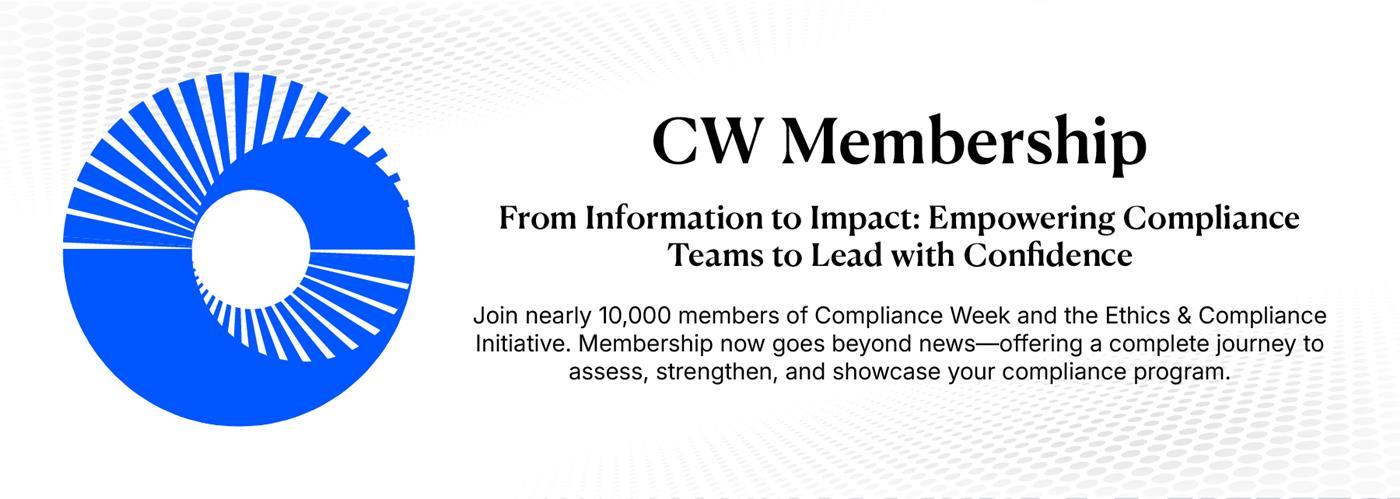- Home
-
News
- Back to parent navigation item
- News
- National Compliance Officer Day 2025
- Accounting & Auditing
- AI
- AML
- Anti-Bribery
- Best Practices
- Boards & Shareholders
- Cryptocurrency and Digital Assets
- Culture
- ESG/Social Responsibility
- Ethics & Culture
- Europe
- Financial Services
- Internal Controls
- Regulatory Enforcement
- Regulatory Policy
- Risk Management
- Sanctions
- Surveys & Benchmarking
- Supply Chain
- Third Party Risk
- Whistleblowers
- Opinion
- Benchmarking
- Certification
- Events
- Research
- Awards
-
CW Connect
- Back to parent navigation item
- CW Connect
- Sign In
- Apply
- Membership
Why audit won’t save your anti-money laundering (AML) program
By Brett Erickson, guest contributor 2025-08-29T20:52:00

In financial institutions across the United States, there’s a reflex that’s become almost ritual.
When a regulator walks in, or a board member asks whether the AML program is working, the answer is the same: “We just passed audit.” It’s delivered with confidence, sometimes even pride, as if the risk has been neutralized. But passing audit doesn’t mean your program is safe.
It doesn’t mean it’s effective. And in today’s threat landscape, it doesn’t mean much of anything at all.
THIS IS MEMBERS-ONLY CONTENT
You are not logged in and do not have access to members-only content.
If you are already a registered user or a member, SIGN IN now.
Related articles
-
 Opinion
OpinionBeyond the Binder: Policy governance in practice
2025-10-14T19:44:00Z By Anna Grover, CW guest columnist
Most compliance professionals have faced it: a regulator or client requests a policy, and several slightly different “final” versions appear. The issue often stems from reactive, siloed work without a unified governance framework.
-
 Opinion
OpinionDecision Debt: The silent crisis undermining compliance and governance
2025-09-19T17:19:00Z By Erica Curry, CW guest columnist
Decision debt is the practice of leaving key compliance decisions unresolved, and it is a crisis few compliance leaders are willing to name. Some of the world’s largest financial institutions, including Wells Fargo and Citibank, have learned this lesson the hard way.
-
 Article
ArticleDigital wallets should speed up compliance, but companies must focus on trust and security
2025-09-04T18:49:00Z By Ruth Prickett
The EU has one, the U.K. is getting one, many U.S. states are working with Google and Apple to provide one, and now industry sectors are developing their own digital wallet.
More from Opinion
-
 Article
ArticleWhat 2025’s AI mishaps should teach compliance in 2026
2025-12-29T12:00:00Z By Ruth Prickett
If 2025 was the year generative AI took off in organizations in every sector, it was also the year we saw increasing examples of the risks of AI mishaps.
-
 Opinion
OpinionBuilding resilient teams in cyberdefense
2025-12-29T12:00:00Z By Timothy Miller, CW guest columnist
The stress on cyberdefense teams can be accurately described as a form of chronic occupational trauma stemming from several unique pressures. But there are ways to build a culture that combats these pressures.
-
 Opinion
OpinionThe invisible cost of digital defense on mental health
2025-12-26T12:00:00Z By By Timothy Miller, CW guest columnist
Cybersecurity professionals, particularly those in leadership roles, often face immense pressure and stress due to the constant threat of cyberattacks.
- Terms and Conditions
- Privacy Policy
- Do Not Sell My Info
- © 2025 Compliance Week
Site powered by Webvision Cloud






